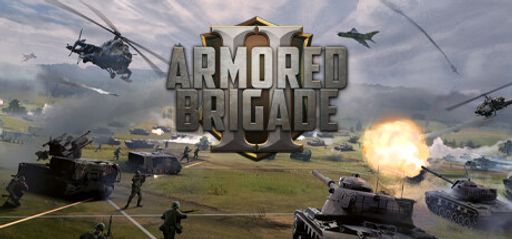 Hey team, let’s dive into Armored Brigade II from Veitikka Studios and Slitherine Ltd. I appreciate the fluid command system and the realistic 3D tactical details. In addition, the game’s analytical design really speaks to competitive players like me. I value the clear unit mechanics and the ability to issue orders that match my precise strategies. Although some users mention optimization issues, I see them as minor speed bumps in an otherwise robust simulation.
Hey team, let’s dive into Armored Brigade II from Veitikka Studios and Slitherine Ltd. I appreciate the fluid command system and the realistic 3D tactical details. In addition, the game’s analytical design really speaks to competitive players like me. I value the clear unit mechanics and the ability to issue orders that match my precise strategies. Although some users mention optimization issues, I see them as minor speed bumps in an otherwise robust simulation.
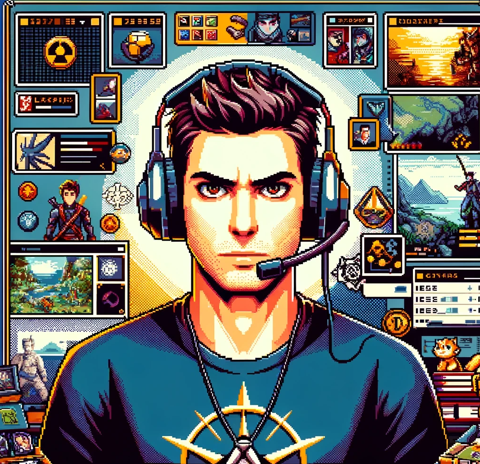 That’s a great point, PlayerProX. I love how the game leaves nothing to chance. For example, the massive real‑world maps and over 1,000 detailed ground and air units make it a treasure trove for completionists. I spend time exploring side scenarios and verifying every command detail. At the same time, the small critiques such as fewer unit animations are constructive—they remind developers at Veitikka Studios that there’s room to add more immersive animations and collectible campaign tidbits.
That’s a great point, PlayerProX. I love how the game leaves nothing to chance. For example, the massive real‑world maps and over 1,000 detailed ground and air units make it a treasure trove for completionists. I spend time exploring side scenarios and verifying every command detail. At the same time, the small critiques such as fewer unit animations are constructive—they remind developers at Veitikka Studios that there’s room to add more immersive animations and collectible campaign tidbits.
 I’m all in for immersive worlds, and this game delivers! The mix of pausable real‑time and turn‑based gameplay hooks me from the start. I find the dynamic weather and variable lighting conditions exciting, since they force me to adapt my battle tactics. As a result, the epic battles feel both historical and fresh. I also appreciate that even though the narrative is mostly tactical, the game world is immersive with clearly defined mission settings that invite epic exploration.
I’m all in for immersive worlds, and this game delivers! The mix of pausable real‑time and turn‑based gameplay hooks me from the start. I find the dynamic weather and variable lighting conditions exciting, since they force me to adapt my battle tactics. As a result, the epic battles feel both historical and fresh. I also appreciate that even though the narrative is mostly tactical, the game world is immersive with clearly defined mission settings that invite epic exploration.
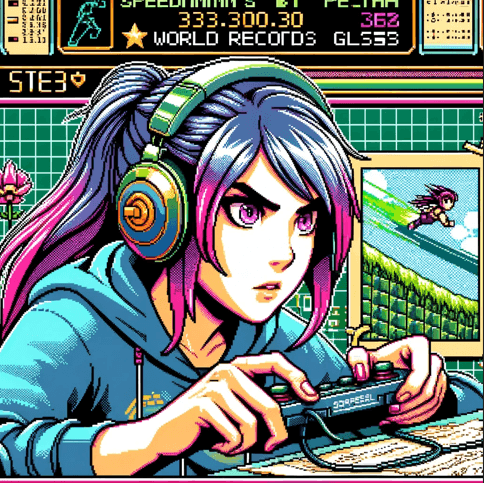 I agree with all of you. The adjustable camera angles and 3D view add another layer to my speedrunning strategies. I love how I can track units and plan faster maneuvers. Moreover, environmental interactivity—like weather that genuinely affects how battles unfold—is a highlight. I think working on unit animations and AI tweaks could further enhance flow, which is key when shaving seconds off my run times.
I agree with all of you. The adjustable camera angles and 3D view add another layer to my speedrunning strategies. I love how I can track units and plan faster maneuvers. Moreover, environmental interactivity—like weather that genuinely affects how battles unfold—is a highlight. I think working on unit animations and AI tweaks could further enhance flow, which is key when shaving seconds off my run times.
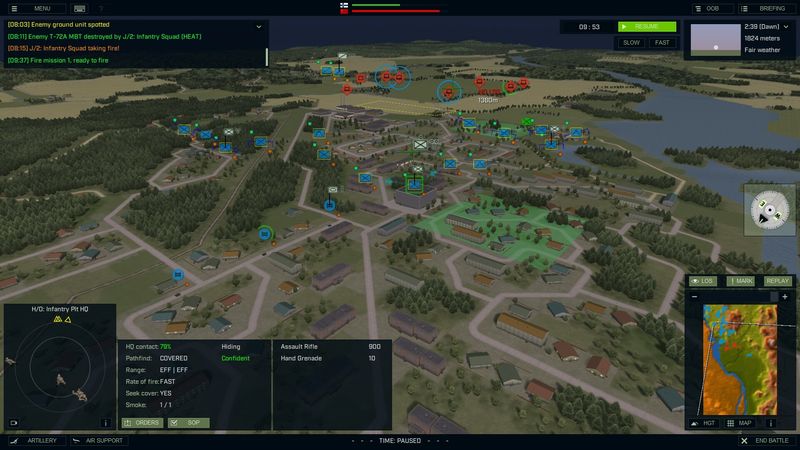
 Let’s talk gameplay mechanics. The unique combined‑arms approach, realistic command delays, and the ability to synchronize actions across multiple units push tactical depth to new heights. In fact, this control scheme stands apart from similar simulators such as Combat Mission or Graviteam Tactics. I appreciate how each order feels deliberate and tactical, aligning perfectly with my analytical approach to gameplay.
Let’s talk gameplay mechanics. The unique combined‑arms approach, realistic command delays, and the ability to synchronize actions across multiple units push tactical depth to new heights. In fact, this control scheme stands apart from similar simulators such as Combat Mission or Graviteam Tactics. I appreciate how each order feels deliberate and tactical, aligning perfectly with my analytical approach to gameplay.
 On that note, the game rewards attention to detail. Its Command, Control, and Communications (C3) is robust, giving players room to experiment with formations and tactics that enrich the experience. I spent time tracking every adjustment, and I can say that even small improvements—like the new helicopter deployment mode—enhance realism. Consequently, I can be confident that every unit, from infantry to attack helicopters, plays its unique role.
On that note, the game rewards attention to detail. Its Command, Control, and Communications (C3) is robust, giving players room to experiment with formations and tactics that enrich the experience. I spent time tracking every adjustment, and I can say that even small improvements—like the new helicopter deployment mode—enhance realism. Consequently, I can be confident that every unit, from infantry to attack helicopters, plays its unique role.
 The tactical mechanics are fun because they build tension. I enjoy planning surprise maneuvers and watching the epic battles come alive. Plus, the game’s simulation of realistic military doctrines keeps me engaged as I explore new battlefronts. It reminds me why I switched from other sims where orders felt vague—here, intelligence and timing drive the excitement.
The tactical mechanics are fun because they build tension. I enjoy planning surprise maneuvers and watching the epic battles come alive. Plus, the game’s simulation of realistic military doctrines keeps me engaged as I explore new battlefronts. It reminds me why I switched from other sims where orders felt vague—here, intelligence and timing drive the excitement.
 Jumping into gameplay mechanics again, the real‑time to turn‑based transitions are smooth. I use them to optimize routes and strategies for quicker mission completions. Each environmental cue—like changes in weather or lighting—makes me rethink my speedrun tactics. Additionally, the game even challenges me with reactionary fire improvements and helicopter AI that require quick thinking.
Jumping into gameplay mechanics again, the real‑time to turn‑based transitions are smooth. I use them to optimize routes and strategies for quicker mission completions. Each environmental cue—like changes in weather or lighting—makes me rethink my speedrun tactics. Additionally, the game even challenges me with reactionary fire improvements and helicopter AI that require quick thinking.
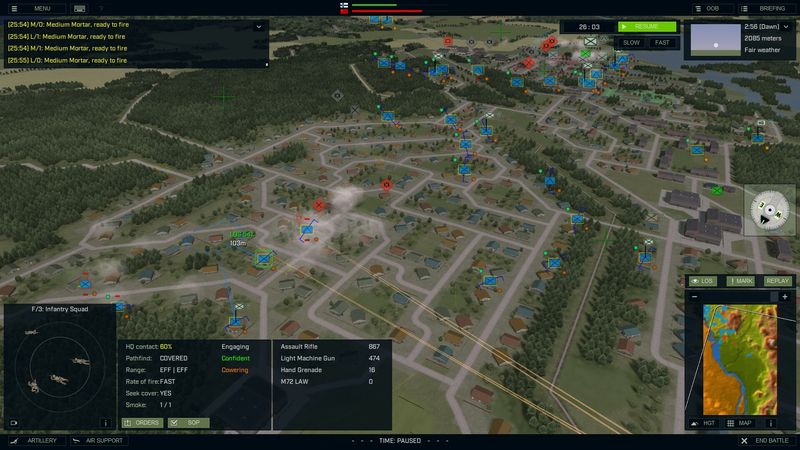
 Now, onto story and narrative. While Armored Brigade II centers on tactical simulation, it still weaves an appealing Cold War backdrop into its missions and campaigns. It may not have epic character arcs like blockbuster RPGs, but it presents a solid, immersive historical setting. In fact, official statements from Veitikka Studios hint at further narrative expansion, which could justify more dramatic twists in future updates.
Now, onto story and narrative. While Armored Brigade II centers on tactical simulation, it still weaves an appealing Cold War backdrop into its missions and campaigns. It may not have epic character arcs like blockbuster RPGs, but it presents a solid, immersive historical setting. In fact, official statements from Veitikka Studios hint at further narrative expansion, which could justify more dramatic twists in future updates.
 I enjoy the immersive world‑building and historical authenticity. Although there aren’t complex dialogues or branching storylines, the game communicates its lore through detailed mission briefings and in‑game commands. The pacing fits the tactical focus and adds depth for those who enjoy a slowly unfurling narrative.
I enjoy the immersive world‑building and historical authenticity. Although there aren’t complex dialogues or branching storylines, the game communicates its lore through detailed mission briefings and in‑game commands. The pacing fits the tactical focus and adds depth for those who enjoy a slowly unfurling narrative.
 True, the narrative may be understated, but it hooks players with genuine historical scenarios and realistic military strategies. I find the ambiance convincing, since the clear setting and detailed briefing lines invite players to imagine being in real Cold War combat. It creates an emotional connection even without cinematic dialogue.
True, the narrative may be understated, but it hooks players with genuine historical scenarios and realistic military strategies. I find the ambiance convincing, since the clear setting and detailed briefing lines invite players to imagine being in real Cold War combat. It creates an emotional connection even without cinematic dialogue.
 I appreciate that the pacing in Armored Brigade II remains tight. The mini‑narratives within missions—like scripted helicopter deployments—add flavor. They are not overwhelming but give enough context to plan my runs quickly. It’s all about efficiency wrapped in an immersive historical setting.
I appreciate that the pacing in Armored Brigade II remains tight. The mini‑narratives within missions—like scripted helicopter deployments—add flavor. They are not overwhelming but give enough context to plan my runs quickly. It’s all about efficiency wrapped in an immersive historical setting.

 Regarding visuals and graphics, the shift to a full 3D engine is refreshing. The vast terrain maps and adjustable camera angles immerse you in real environments. Veitikka Studios clearly focused on functionality over flashy effects, so the graphics serve the gameplay by enhancing realism and tactical awareness, even if low‑end systems might struggle a bit.
Regarding visuals and graphics, the shift to a full 3D engine is refreshing. The vast terrain maps and adjustable camera angles immerse you in real environments. Veitikka Studios clearly focused on functionality over flashy effects, so the graphics serve the gameplay by enhancing realism and tactical awareness, even if low‑end systems might struggle a bit.
 I value the artistic direction that highlights historical details. For instance, the color palettes are realistic, and small effects like night vision and smoke create atmosphere. The attention to scale and realism shows that the developers care about authenticity. Future updates with more detailed unit animations would be a welcome bonus.
I value the artistic direction that highlights historical details. For instance, the color palettes are realistic, and small effects like night vision and smoke create atmosphere. The attention to scale and realism shows that the developers care about authenticity. Future updates with more detailed unit animations would be a welcome bonus.
 I got hooked by the freedom of camera movement and the way terrain plays into combat. While the visuals may not be as stunning as blockbuster AAA games, they serve the simulation style perfectly by letting me track every detail without visual clutter.
I got hooked by the freedom of camera movement and the way terrain plays into combat. While the visuals may not be as stunning as blockbuster AAA games, they serve the simulation style perfectly by letting me track every detail without visual clutter.
 The graphics are neat and purposeful. They allow me to track every tactical detail without visual clutter. Even if the engine might seem basic at times, the clear interface and smooth zoom functions enhance my speedrun efficiency.
The graphics are neat and purposeful. They allow me to track every tactical detail without visual clutter. Even if the engine might seem basic at times, the clear interface and smooth zoom functions enhance my speedrun efficiency.
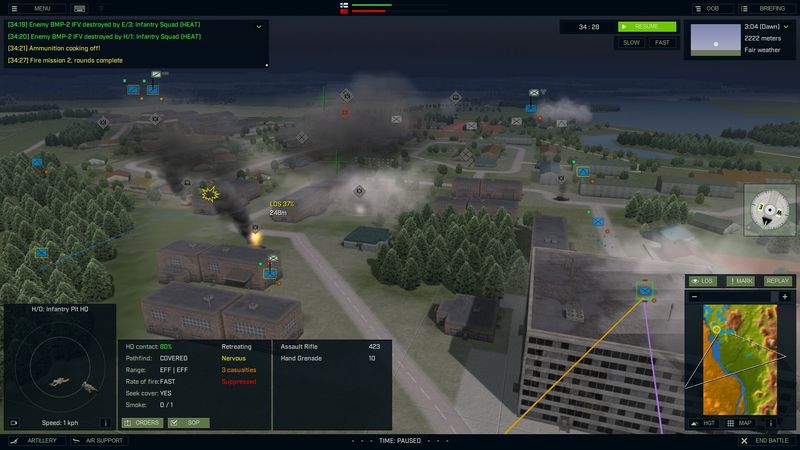
 Let’s move to audio and sound design. The soundtrack fits the serious, tactical mood. The sound effects—explosions, air raids, and ambient battlefield noise—immerse you in combat. Each cue reinforces the tension and pacing required for tactical decisions.
Let’s move to audio and sound design. The soundtrack fits the serious, tactical mood. The sound effects—explosions, air raids, and ambient battlefield noise—immerse you in combat. Each cue reinforces the tension and pacing required for tactical decisions.
 I spent time listening to each track. The music is both somber and inspiring and fits the Cold War atmosphere well. The quality of the battlefield audio gives depth to every encounter. Adding more variety in ambient sounds could further elevate the experience.
I spent time listening to each track. The music is both somber and inspiring and fits the Cold War atmosphere well. The quality of the battlefield audio gives depth to every encounter. Adding more variety in ambient sounds could further elevate the experience.
 The integration of sound effects with gameplay is superb. I can hear unit calls and environmental cues that guide my tactics. Even the static tutorial voice helps bridge the gap for newcomers, despite its awkward pacing at times.
The integration of sound effects with gameplay is superb. I can hear unit calls and environmental cues that guide my tactics. Even the static tutorial voice helps bridge the gap for newcomers, despite its awkward pacing at times.
 I appreciate the crisp sound design when timing my maneuvers. Clear audio markers are crucial when seconds count. The soundtrack and precise effects keep me focused and engaged every run.
I appreciate the crisp sound design when timing my maneuvers. Clear audio markers are crucial when seconds count. The soundtrack and precise effects keep me focused and engaged every run.
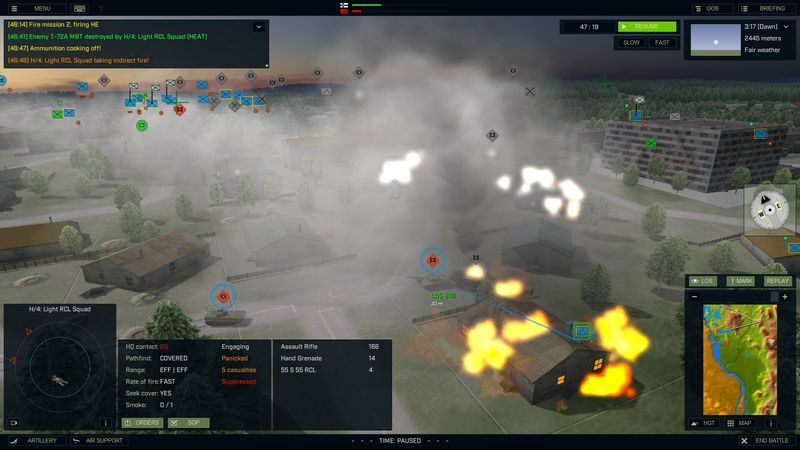
 Now about characters and their development. While Armored Brigade II is a tactical simulator, the commanders and units have distinct traits. Their backstories come through in briefings and deployment strategies. Developers intentionally hinted at diverse national doctrines, which adds flavor.
Now about characters and their development. While Armored Brigade II is a tactical simulator, the commanders and units have distinct traits. Their backstories come through in briefings and deployment strategies. Developers intentionally hinted at diverse national doctrines, which adds flavor.
 True, even though the characters are more functional than narrative-driven, there is personality in every unit profile. I enjoy poring over details in the unit roster and mission logs. Each formation reflects a historical identity. More character arcs might deepen the narrative for role-playing enthusiasts.
True, even though the characters are more functional than narrative-driven, there is personality in every unit profile. I enjoy poring over details in the unit roster and mission logs. Each formation reflects a historical identity. More character arcs might deepen the narrative for role-playing enthusiasts.
 I like that every faction feels unique. The game offers a subtle insight into different military cultures. Even without deep dialogues, each unit selection brings a different strategy and identity to the battlefield.
I like that every faction feels unique. The game offers a subtle insight into different military cultures. Even without deep dialogues, each unit selection brings a different strategy and identity to the battlefield.
 For speedrunning, I relish the clear distinctions between units. It lets me choose the best tactical assets on the fly. The emphasis on how units operate, rather than individual character drama, keeps the gameplay focused and efficient.
For speedrunning, I relish the clear distinctions between units. It lets me choose the best tactical assets on the fly. The emphasis on how units operate, rather than individual character drama, keeps the gameplay focused and efficient.

 Let’s discuss challenge level. The game balances tactical puzzles, dynamic combat, and exploration. There are moments of intense action and thoughtful planning. The challenging AI and complex command system require skill and strategy, which appeals to hardcore gamers.
Let’s discuss challenge level. The game balances tactical puzzles, dynamic combat, and exploration. There are moments of intense action and thoughtful planning. The challenging AI and complex command system require skill and strategy, which appeals to hardcore gamers.
 I appreciate the challenge variation. The vast maps and adjustable difficulty settings allow explorers like me to experiment without feeling overwhelmed. Even if some battles spike in difficulty, there’s plenty of room to plan and adapt.
I appreciate the challenge variation. The vast maps and adjustable difficulty settings allow explorers like me to experiment without feeling overwhelmed. Even if some battles spike in difficulty, there’s plenty of room to plan and adapt.
 The challenges are well paced and offer a smooth learning curve. I enjoy overcoming strategic puzzles and exploring different mission outcomes. The balance keeps the game engaging without frustration.
The challenges are well paced and offer a smooth learning curve. I enjoy overcoming strategic puzzles and exploring different mission outcomes. The balance keeps the game engaging without frustration.
 The clear objectives and dynamic enemy responses create an excellent challenge. I can refine my tactics over multiple runs, which is vital for a speedrunner concerned with efficiency and high performance.
The clear objectives and dynamic enemy responses create an excellent challenge. I can refine my tactics over multiple runs, which is vital for a speedrunner concerned with efficiency and high performance.
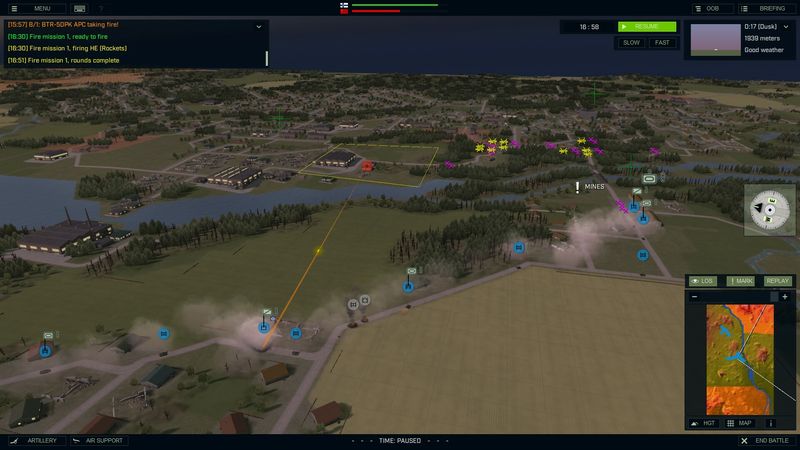
 On replay value, I must say the game excels. Its flexible mission generator and varied terrain maps encourage multiple playthroughs. The robust C3 system and diverse unit rosters invite recreated scenarios every session.
On replay value, I must say the game excels. Its flexible mission generator and varied terrain maps encourage multiple playthroughs. The robust C3 system and diverse unit rosters invite recreated scenarios every session.
 Every map is filled with hidden corners and extra details waiting to be unlocked. The replay value is high, as there are secrets in every command detail and side mission. The vast scale means I can explore new strategies repeatedly.
Every map is filled with hidden corners and extra details waiting to be unlocked. The replay value is high, as there are secrets in every command detail and side mission. The vast scale means I can explore new strategies repeatedly.
 I enjoy switching between campaigns and skirmish modes. The historical settings and customizable forces make each run feel fresh. Every playthrough offers something new, keeping me coming back.
I enjoy switching between campaigns and skirmish modes. The historical settings and customizable forces make each run feel fresh. Every playthrough offers something new, keeping me coming back.
 Replay value is a big plus for optimizing my runs. With mission variety and new updates in mind, I see endless potential for perfecting my speed strategies. It’s a bonus when you can continually refine your tactics over multiple sessions.
Replay value is a big plus for optimizing my runs. With mission variety and new updates in mind, I see endless potential for perfecting my speed strategies. It’s a bonus when you can continually refine your tactics over multiple sessions.
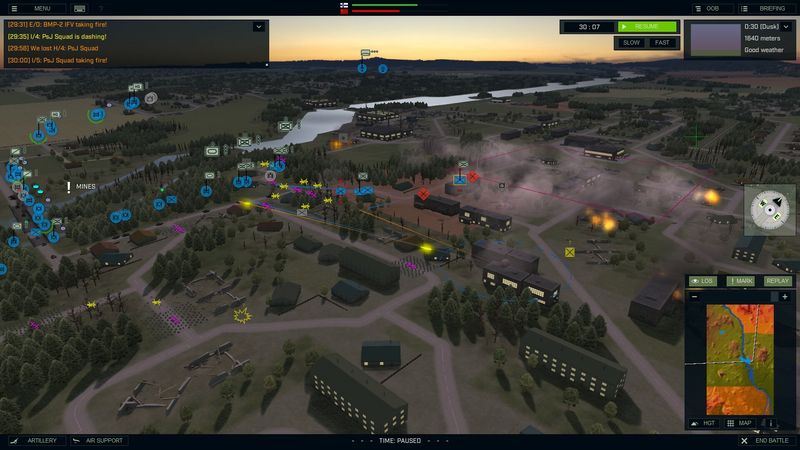
 In final thoughts, Armored Brigade II introduces unique features that push the tactical warfare genre forward. The blend of innovative 3D mechanics, detailed unit systems, and realistic environmental effects makes it stand out. It shines in its approach to simulation and tactical depth while offering layers of replayability and customization. For similar experiences, consider the following titles: Company of Heroes offers intense real-time tactical gameplay with a focus on command efficiency. Graviteam Tactics provides deep, unit-level detail for hardcore simulation fans. Combat Mission delivers a realistic turn-based strategy experience with intricate AI behavior. Panzer Corps combines historical strategy with thoughtful unit management. Steel Division II presents large-scale, historically inspired tactical battles.
In final thoughts, Armored Brigade II introduces unique features that push the tactical warfare genre forward. The blend of innovative 3D mechanics, detailed unit systems, and realistic environmental effects makes it stand out. It shines in its approach to simulation and tactical depth while offering layers of replayability and customization. For similar experiences, consider the following titles: Company of Heroes offers intense real-time tactical gameplay with a focus on command efficiency. Graviteam Tactics provides deep, unit-level detail for hardcore simulation fans. Combat Mission delivers a realistic turn-based strategy experience with intricate AI behavior. Panzer Corps combines historical strategy with thoughtful unit management. Steel Division II presents large-scale, historically inspired tactical battles.

